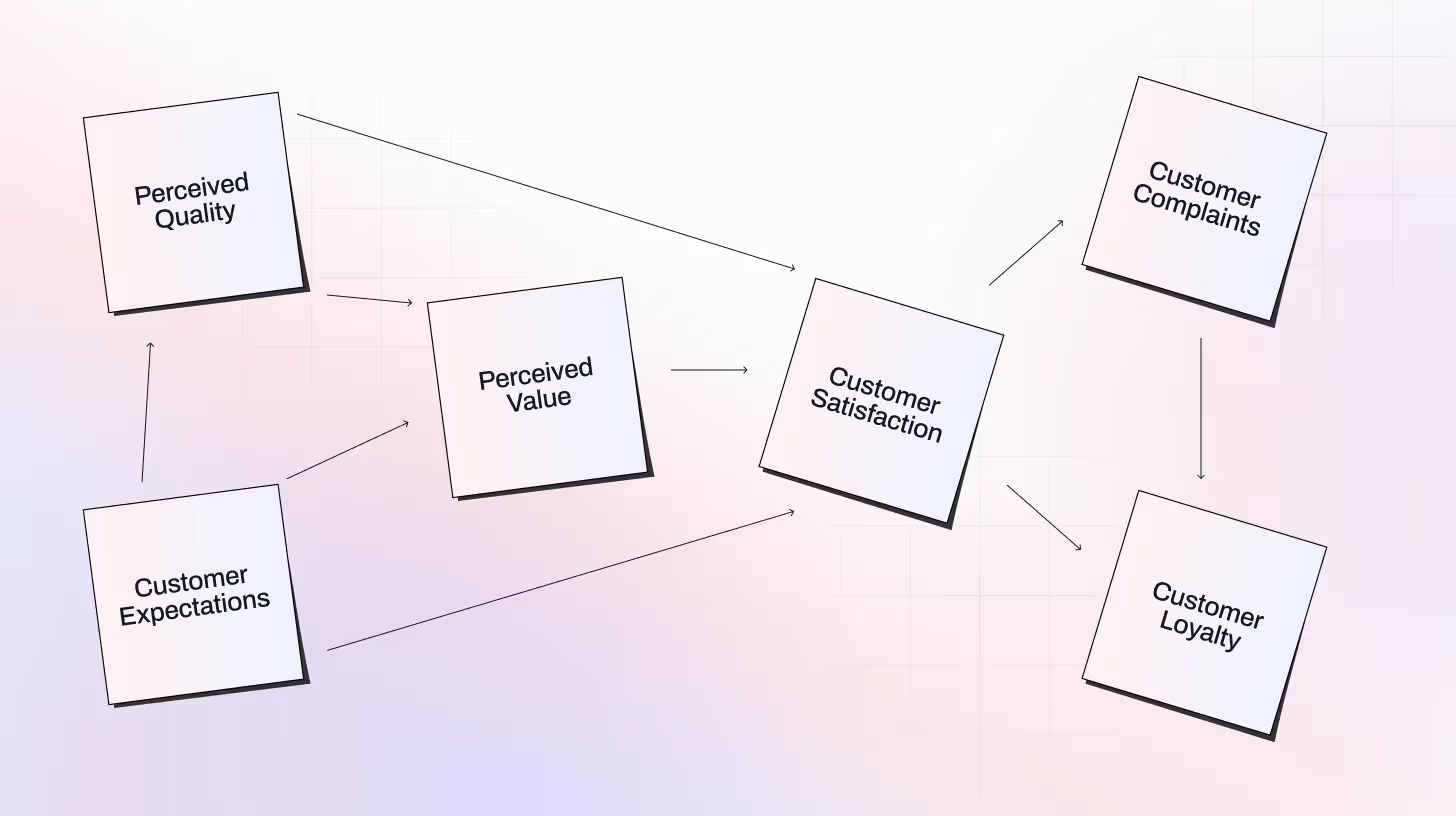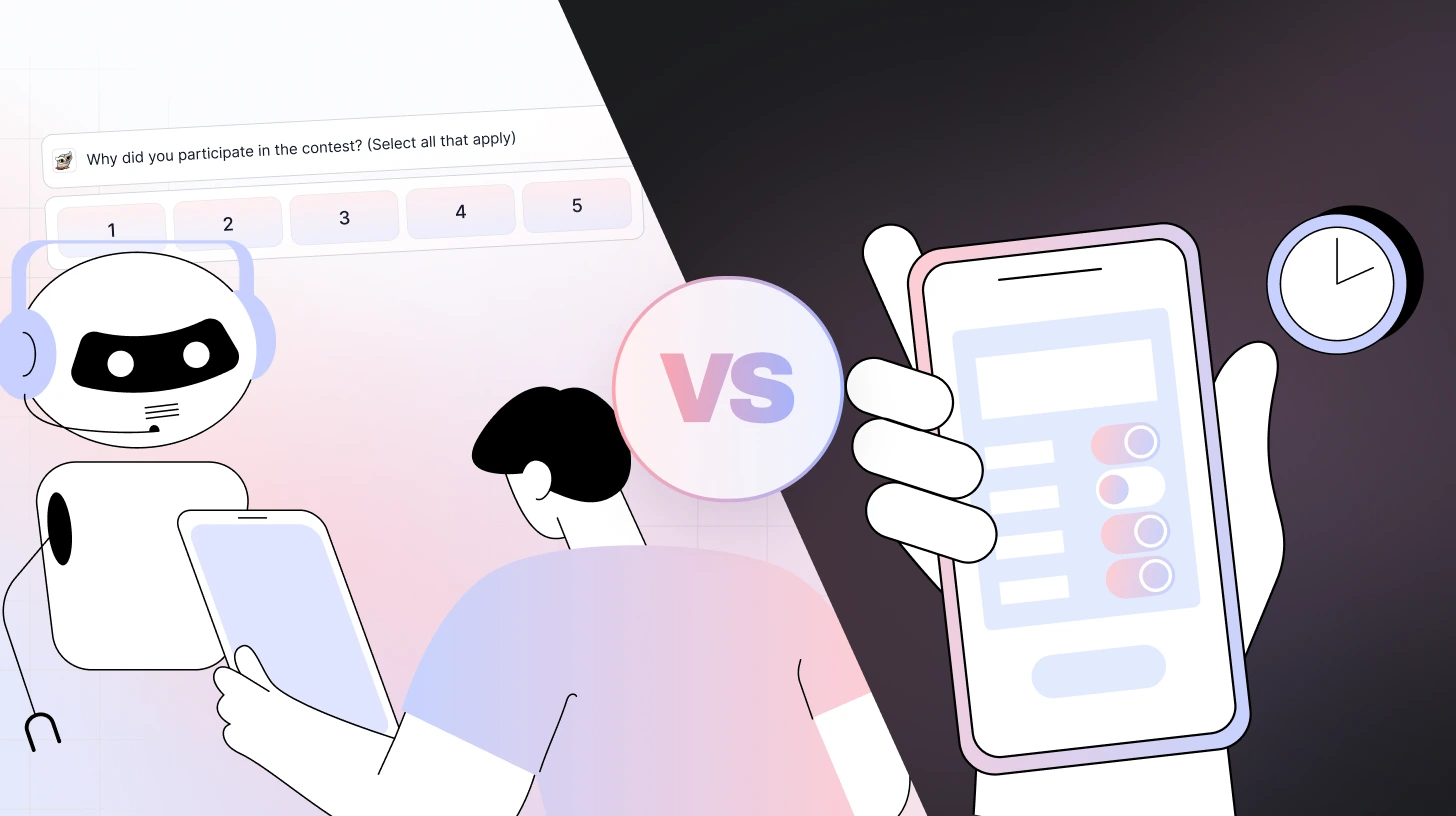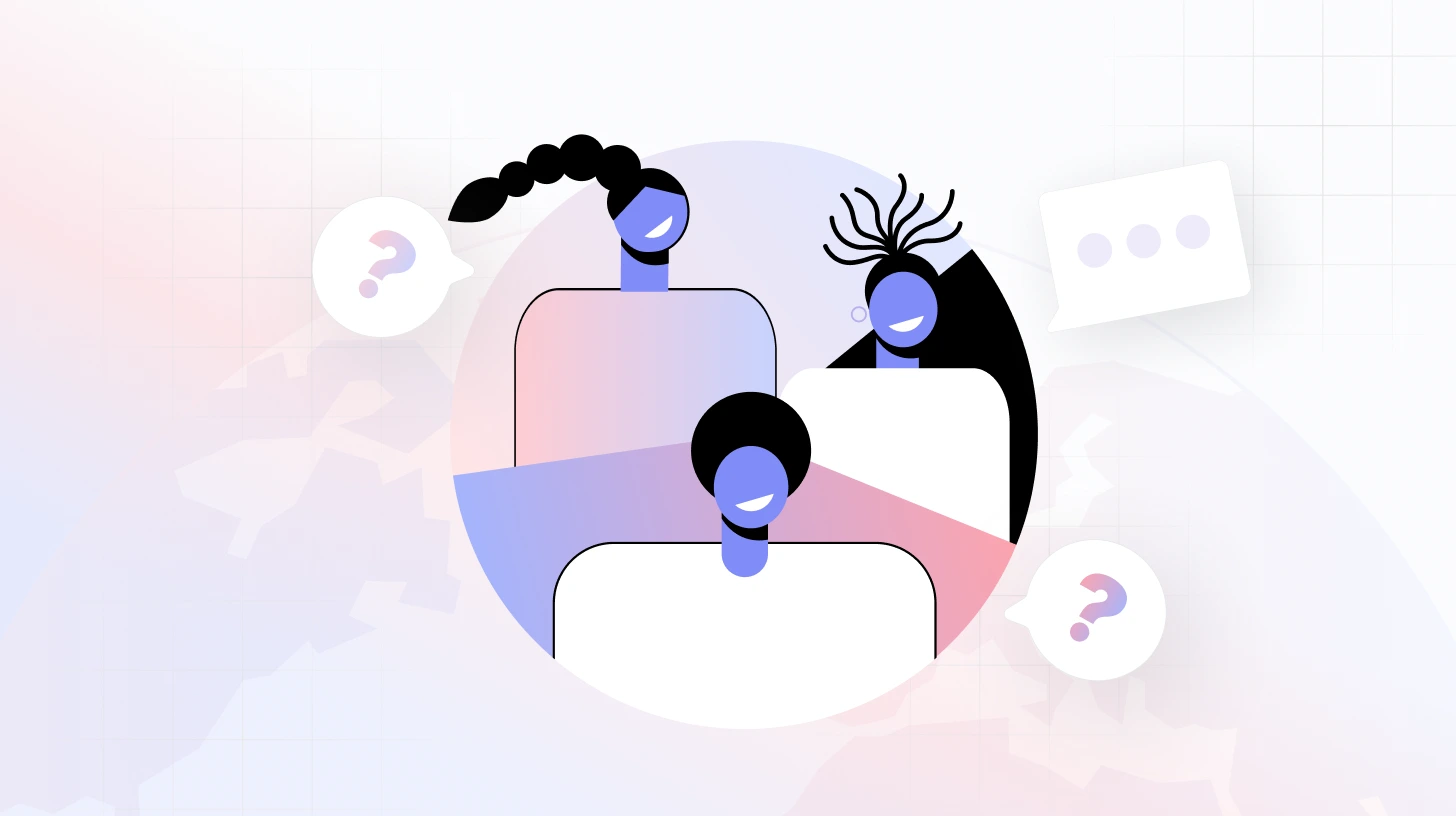 Blog
Blog How to Design B2B Surveys That Capture Real Buyer Insights
How to Design B2B Surveys That Capture Real Buyer InsightsHow to Design B2B Surveys That Capture Real Buyer Insights

Running a business is tough—really tough. You’re managing teams, watching your budget, chasing growth… and sometimes, it feels like there just aren’t enough hours in the day.
But here’s something that can actually make things easier: listening to your customers. And I mean really listening, not just picking out the parts you want to hear, but opening up real conversations where they can tell you what’s working, what’s not, and what they need from you.
When companies take the time to do this, the results speak for themselves. Even a small 5% bump in customer retention can lead to a 25–95% increase in profits. That’s huge.
The best part? You don’t need to have a phone call with every customer to make it happen. B2B Surveys are a simple, scalable way to start real conversations no matter how busy things get.
What Is a B2B Survey?
A B2B survey is a research method used to collect feedback, insights, and data from professionals, organizations, or decision-makers in a business-to-business (B2B) environment. Unlike consumer surveys, B2B surveys target companies as customers, whether they’re users, buyers, or partners.
Here’s what these surveys can reveal:
- Customer needs and pain points
- Product satisfaction and feature requests
- Buying behavior and decision-making processes
- Market trends and competitive positioning
B2B surveys are a powerful tool for driving smarter decisions in product development, customer experience, marketing, and strategic planning. When done right, they help businesses deepen relationships with clients, reduce churn, and gain a competitive edge.
Also read: B2B Customer Satisfaction Survey: Questions, Metrics, and Template
10 Common Types of B2B Surveys (and When to Use Each One)
Also read: 8 Types of Market Research Surveys Every Marketer Should Know

How to Create and Conduct a B2B Survey
Now that we’ve seen the power of B2B surveys, let’s walk through how to create and run them step by step for maximum impact.
Step 1: Define Your Objectives
The first step is to clearly define what you want to learn. What questions do you want answered? What insights will help your business grow? Setting focused objectives keeps your survey targeted and effective.
Good B2B surveys start with goals like:
- Diagnosing customer churn
- Validating a new product feature
- Benchmarking your brand vs. competitors
- Understanding the buying behavior of lost leads
Step 2: Choose the Right Survey Type & Method
Choose from the following:
- Online Surveys: Fast, scalable, and easy to distribute via email, LinkedIn, or your website. Great for CSAT, onboarding, and product feedback.
- AI-Powered Surveys (Best Pick!): Adaptive, personalized, and smart. Automatically analyzes responses, detects tone, and delivers instant insights. Ideal for win/loss, churn, and executive feedback.
- Other Methods (Optional): Phone calls, focus groups, or mail use only for deep-dive or niche cases.
Pro tip: Combine online reach with AI insights for maximum impact.
Step 3: Build Smart, Goal-Driven Questions
Write clear, focused questions that directly support your survey goals. Use a mix of formats—multiple-choice, ratings, and open-ended questions to gather both numerical data and insights. Keep it short and simple to encourage responses and gather useful data.
Step 4: Segment and Personalize
Don’t send the same survey to your CMO and your onboarding manager. Instead:
- Segment by role, account size, lifecycle stage
- Personalize questions using AI (e.g., “Since you use [Feature X]…”)
Step 5: Distribute Strategically
Think beyond email. Use channels that fit your B2B audience and timing:
- Personalized email outreach
- In-app triggers post-interaction
- LinkedIn or Slack community groups
- Embedded surveys in reports or newsletters
Timing matters: Send B2B surveys during working hours, and within 24–48 hours of a key interaction.
Step 6: Analyze the Results (with AI, Not Spreadsheets)
Once responses are in, don’t just look at averages. Analyze:
- Trends by segment (e.g., SMBs vs. enterprise)
- Sentiment analysis in open-text responses
- Priority matrix: High importance + low satisfaction = Fix it now
Use TheySaid AI Analysis to summarize insights instantly, identify themes, and get charts ready for internal stakeholders.
Step 7: Take Action & Close the Loop
A survey that leads nowhere erodes trust. Share key findings and action steps.
Example Email:
“Thanks for your feedback! Based on your input, we’re improving onboarding content and speeding up response times for enterprise support.”
This transparency builds loyalty and improves participation in future surveys.
Suggested read: B2B Survey Panels: Definition, Use Cases, & Market Research Insights
B2B Survey Questions to Drive Smarter Marketing Decisions
Here are sample B2B survey questions organized by objective:
Customer Satisfaction & Retention
- How satisfied are you with our product/service overall?
- What’s the biggest benefit you’ve experienced so far?
- Have you ever considered switching providers? Why or why not?
- How likely are you to recommend us to a colleague? (NPS)
Product Feedback
- Which features do you use most often?
- What features do you wish we had?
- On a scale of 1–10, how easy is it to use our product?
- Have you experienced any bugs or issues? If yes, please describe.
Onboarding & Support
- How clear was the onboarding process?
- How long did it take to see value from our product?
- Was the support team helpful and responsive?
- What could we have done to improve your initial setup experience?
Also read: How to Conduct an Effective Onboarding Feedback Survey
Decision-Making & Buying Behavior
- What factors influenced your decision to choose us?
- Who was involved in the purchasing decision?
- What other solutions did you consider before buying?
- How do you usually evaluate new vendors or tools?
Churn & Exit Feedback
- What led to your decision to cancel or downgrade?
- What could we have done to keep you as a customer?
- Did our product meet your expectations? Why or why not?
- Are you open to returning in the future? What would it take?
Market Research & Positioning
- What trends are most impacting your industry right now?
- How do we compare to other providers you’ve used?
- What keywords or phrases would you use to describe us?
- What’s one thing that would make us your go-to solution?
Also read: Online Market Survey Strategies to Boost Your Business Growth
Best Practices for B2B Survey Design
- Use clear section headers and bullet points to make the survey easy to read and scan.
- Add skip logic so respondents only see questions relevant to them.
- Mix up question types include multiple choice, ratings, rankings, and open-ended responses.
- Keep the survey short and to the point; aim for under 10 minutes to complete.
- Consider offering small incentives, like gift cards, to increase response rates.
- Always test your survey first to catch confusing wording or logic issues before launching.
Also read: B2B Survey Provider: What to Look for in 2025
Create B2B Surveys the Smart Way with TheySaid
Start in seconds. Just type a sentence about what you want to learn like “Why are our top customers sticking with us?” and TheySaid’s AI instantly builds your entire survey project.
Get real insights fast. As responses roll in, AI sorts through the feedback, finds patterns, and highlights them. You’ll know exactly where to focus your attention.
Take action without second-guessing. TheySaid doesn’t just give you data it tells you what to do next. AI reviews every response and suggests clear action items based on real customer input.
Make it a conversation, not a questionnaire. Instead of boring forms, your respondents chat with AI in a natural, back-and-forth style. It feels more personal and leads to richer, more honest feedback.
With TheySaid, you can launch a range of AI-powered feedback formats, including smart surveys, open-ended interviews, AI-assisted forms, user tests, one-question polls, and recurring pulse checks. AI enhances each format to deliver insights you simply can’t get from traditional survey tools.
Create your B2B survey with us and let AI turn feedback into action.
Key Takeaways
- B2B surveys help you truly listen to your customers not just hear them.
- Platforms like TheySaid can instantly generate surveys from a short prompt and analyze feedback for you in real time.
- Don’t send the same questions to execs and end users. Use role, account size, or lifecycle stage to personalize.
- Combine multiple choice, rating scales, and AI-generated follow-ups to gather both quantitative and qualitative insights.
- Use AI to flag what’s urgent, then follow up with customers to close the loop and show them their voice matters.
FAQs
What makes a B2B survey different from a B2C survey?
A B2B survey targets business professionals or decision-makers, often within complex buying processes. The questions are typically more in-depth and focused on strategy, ROI, and partnership value.
How many questions should a B2B survey have?
Ideally, keep it short—5 to 10 questions max. The more senior your audience, the more concise it should be. Use AI to adapt follow-up questions based on responses.
How often should I run B2B surveys?
It depends on the survey type. CSAT or onboarding surveys can be ongoing, while NPS is often quarterly or biannually. Win/loss surveys should follow each deal closure.
















.svg)